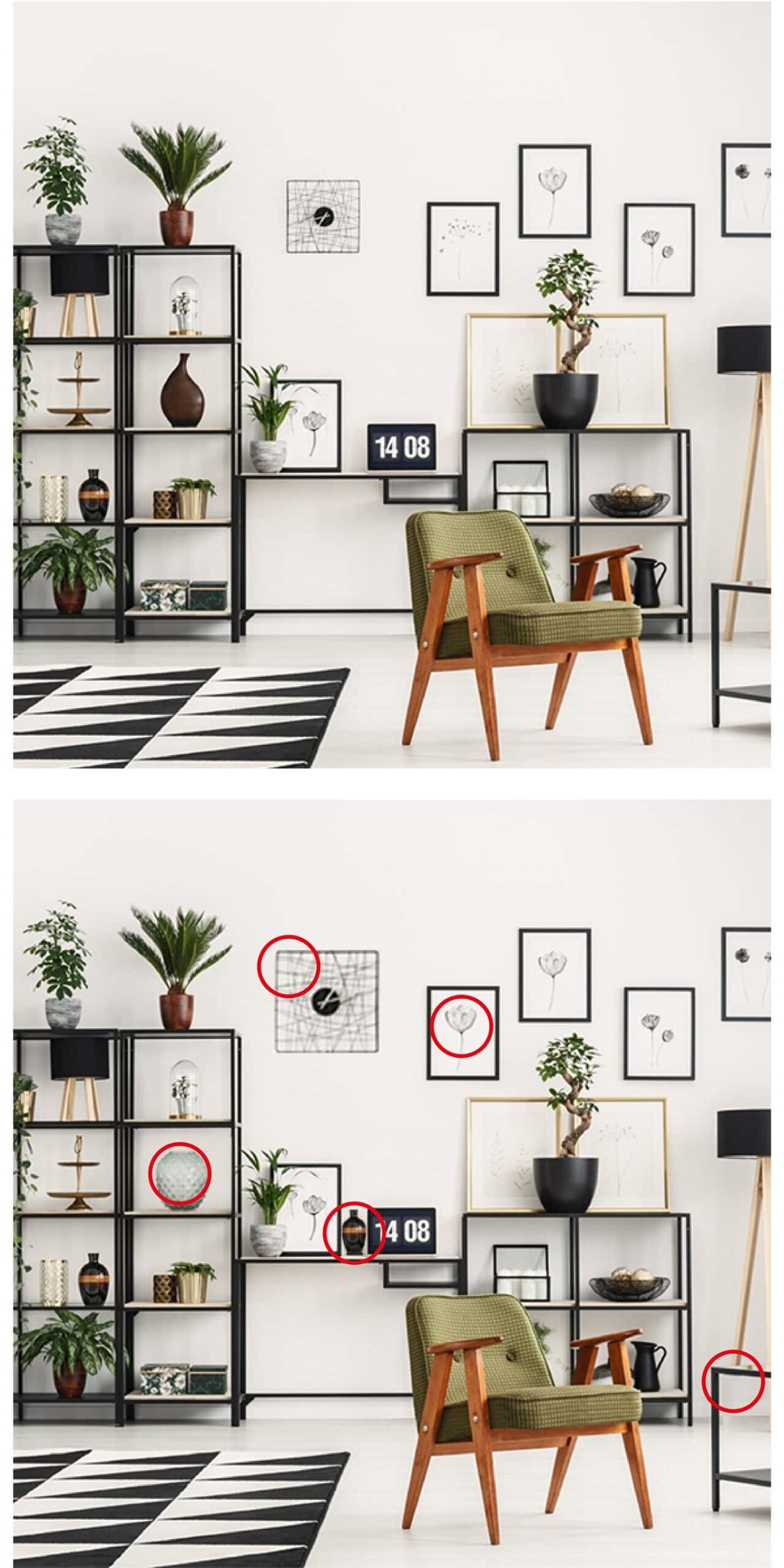Observation Test: Prove Your High IQ By Spotting 5 Differences In Under 10 Seconds!

Spotting 5 Differences: Today’s challenge is a visual test designed to push your observational skills to the limit. Your task is to identify five differences between two images of an office in under 10 seconds.
This type of test is specifically crafted to assess your visual aptitude and ability to spot subtle differences in similar objects or images. It is also valuable for identifying potential eye or neurological issues.
Prove Your High IQ By Spotting 5 Differences
Why Take A Visual Test?
Spotting 5 Differences, Visual tests are a practical method for evaluating vision and identifying visual challenges. These tests are often conducted during ophthalmological examinations and by psychologists to study cognitive processes and learning patterns in children and adults.

They can help diagnose conditions such as myopia, astigmatism, presbyopia, and cataracts. Beyond medical uses, these tests serve as engaging tools to sharpen your focus and improve your attention to detail.
Not Just For Kids
Spotting 5 Differences, While these challenges are popular among children, adults can benefit equally from testing their visual skills. Spot-the-difference games enhance observation and concentration, providing a fun way to evaluate visual acuity and cognitive sharpness.
The results from such tests can help detect vision problems like nearsightedness, farsightedness, or astigmatism, and even uncover more complex ocular anomalies that may not be immediately visible.
Take The Challenge
Spotting 5 Differences, Remember, the faster you spot the differences, the greater your chance of success. Focus intently, examine every detail, and let your keen eye guide you to victory!
Spotting 5 Differences, This visual challenge is an excellent way to test your concentration and attention to detail. By analyzing each object individually and comparing the two images, you can uncover the differences within the allotted time.
The Solution

This image reveal the solution.
Support Our Work
We’re a young media platform dedicated to creating engaging and insightful content. If you enjoyed this challenge, please consider supporting us by sharing this article on your social media. Your support helps our small team of passionate creators thrive!
You can always view and study more brain teaser, intellectual games, puzzles and personality tests in the entertainment section of Chashmak Website. Share them with your friends if you like. Especially those who are interested knowing themselves better and having fun. Follow us on Instagram and Facebook and share your comments and suggestions.
Benefits Of Optical Illusions
Entertaining And Fun
First of all, optical illusions can be fun. This can reduce stress, improve your mood and enhance relaxation.
Exercising The Brain
Research has shown that by exercising the brain, neural pathways are maintained, or enhanced. Such brain exercise can help to improve student alertness and performance on exams. There are therapeutic benefits to people with developmental disabilities as a brain therapy. There also is research indicating that symptoms of dementia or Alzheimer’s disease may be reduced and regression slowed through brain exercises. Optical illusions also can challenge our perceptions and cognitive abilities, helping to improve our mental acuity and cognitive flexibility.
Therapy
They can be used therapeutically to help people with certain conditions, such as amblyopia (lazy eye), to improve their visual perception.
Given these benefits of visual illusions, what are the detriments? Some people may experience dizziness or eye strain, but the most common disadvantage is just frustration. After all, sometimes it can be tricky to find the illusion or hidden image.
Overall, optical illusions can be a fun way to engage with our visual perception and enhance our cognitive abilities.
Also Read:
Spot Visual Challenge: Spot The 12 Differences In Under 60 Seconds!
Can You Spot The Exact Number Of Skunks In This Image? Test Your Perception With This Challenge




